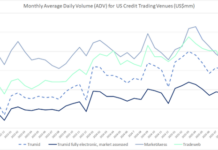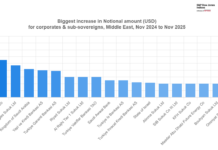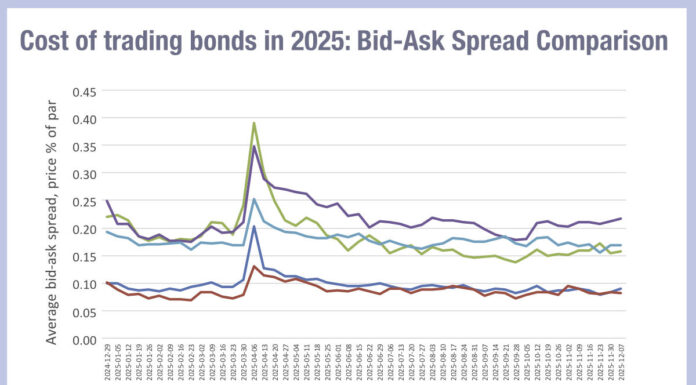The Indian bond market provides a conundrum for investment traders, who fight to gain access to liquidity and pricing information on behalf of their portfolio managers. While the inclusion of Indian government bonds in the JP Morgan Government Bond-Emerging Market Index (GB-EMI) in 2024 and the Bloomberg Emerging Market (EM) Local Currency Government Index from January 2025 has driven additional investors into the market, a highly manual trading model has made investing more challenging.
In aggregate, foreign investors, known as foreign portfolio investors (FPIs) in regulatory terms, invested ₹1.5 lakh crore (US$17.4 billion) in Indian debt instruments in 2024-25, according to the Reserve Bank of India (RBI), the country’s central bank. The balanced against outflows, net inflow for 2024/5 amounted to US$1.7 billion, down from a US$41.6 billion inflow during the previous year.
India’s corporate bond market saw trading volume increase to US$186 billion in 2024 up from US$169 billion in 2023, while US$126 billion was traded in the first five months of 2025 alone.
The average daily volume in the money market increased by 10 per cent to ₹5.5 lakh crore during 2024-25 from the previous year.
By way of contrast in equities, FPIs recorded net outflows of US$15.7 billion during the same period, against net inflows of US$25.3 billion in 2023-24.
Although this is positive for debt markets relative to equities as investment by FPIs increased, they are well below the investment limits set by authorities. As at the end of March 2025, 15.7% of the limits in central government securities (G-secs) were used, down from 18.5% for end of March 2024.
The limits to investment are in part driven by the challenges of accessing the market. For overseas investors, the majority of trading is conducted over-the-counter (OTC).
While anonymous electronic trading is available via a national electronic platform, the NDS-OM system setup by the Clearing Corporation of India (CCIL) and RBI, direct access to the NDS-OM system is currently available only to select financial institutions like commercial banks and primary dealers. Other participants with gilt accounts can access this system through their custodians, whereby the custodians place orders on behalf of their customers. All trades in the OTC market are reported on the NDS-OM within 15 minutes, and OTC secondary market transactions settle in G-Secs either on T+1 or on T+2 basis, reported on the trade date itself.
Changing the face of electronic trading in India
Having a limited range of electronic trading can impact price transparency, execution speed which impacts opportunity costs, and can increase information leakage on trades. As a result, trade sizes are typically larger, carrying more concentrated risk for market makers. The support of the repo market does help dealers provide liquidity.
In mid-June platform operator, MarketAxess, announced it would be connecting with the NDS-OM system. This has the potential to change trading patterns in the country, by allow FPIs to trade Indian Government Bonds (IGBs) electronically. It will allow MarketAxess users to execute using the request for quote (RFQ) protocol and using the familiar MarketAxess interface.
“[It’s] definitely a big deal,” noted one buy-side head of trading in APAC. “We are getting ready. This a big improvement in electronification of this market and potential automation in this space. It will lead to more transactions and less risk for sure.”
Although other platforms are reportedly awaiting licencing agreements, this will initiate the ability of buy-side traders and market makers using an established interface.
Adding electronic trading to this market potentially enables lower costs of trading, with investors able to engage in Indian bond markets with lower risk to themselves.
Given the appetite for Indian markets amongst investors, electronification may well deliver greater trading activity from investors and enhanced market making capabilities for the sell-side.

Riad Chowdhury, head of Asia-Pacific at MarketAxess, said in a statement, “Global emerging markets are well-positioned for increased innovation and international investment—as evidenced by India’s recent addition to notable global EM indices—and we are excited to support both with this launch.”
The significance of this evolution is considerable. India has highly evolved electronic trading in other market areas. The Securities and Exchange Board of India (SEBI), the national markets regulator, has recently shown in is not prepared to tolerate activity it considers improper with its recent fine of US$560 million for market maker Jane Street in the equity options market, yet this does not roll back on electronic progress.
Now the country’s authorities are proving they are keen to modernise and support market efficiency to benefit fixed income investors as well.
©Markets Media Europe 2025















